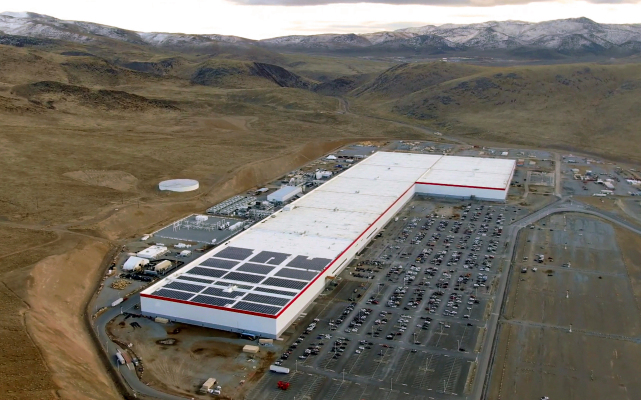Production to start at Tesla gigafactory in September

Panasonic has developed new battery technology for the ‘2170’ lithium-ion cells it produces and supplies to Tesla, a change that improves energy density by 5% and reduces costly cobalt content.
The new, higher-energy dense 2170 cells will be produced by Panasonic at Tesla’s factory in Sparks, Nevada, the company said Thursday. Panasonic is upgrading its battery cell lines with production slated to begin in September. The company operates 13 lines at the factory with a capacity to produce 35 gigawatt hours of batteries each year. All 13 lines will eventually run the new technology, Panasonic Energy North America President Allan Swan said without providing a timeline of when the entire system would be upgraded.
“We’re about to take another leap forward,” Swan said in a recent interview. “It’s kind of exciting from the Panasonic perspective; we’re driving towards cobalt free and we’re driving towards higher energy dense batteries, which gives our customers a choice of how they want utilize that.”
The facility where these new battery cells will be produced is known as Gigafactory 1, a critical component of Tesla’s plan to expand global battery capacity and reduce the cost of electric vehicles. Panasonic has been its most important partner in that project, which based on a recent agreement should last until at least 2023. Panasonic makes the 2170 cells at Gigafactory 1, which Tesla then uses to make battery packs for the Model 3. The 2170 cells are also used in Tesla’s newest vehicle, the Model Y.
Here’s a quick primer. A battery contains two electrodes. There’s an anode (negative) on one side and a cathode (positive) on the other. An electrolyte sits in the middle and acts as the courier that moves ions between the electrodes when charging and discharging.
A cell with greater energy density means that engineers figured out a way to pack more energy in that space. The 5% improvement in energy density in the cells should result in the same gains in Tesla’s battery packs. The upshot: Tesla’s Model 3 and Model Y could see improvements in range. The reduction in cobalt content, a rare chemical element that is expensive and has social and environmental costs, could also help reduce the price of the cells.
Panasonic’s factories in Japan produce the cylindrical lithium-ion “18650” cells, which are used to power Tesla’s Model S and Model X vehicles. Panasonic has already improved 18650 cells, resulting in a reduction in cobalt and improvement in energy density.
Panasonic uses a NCA, or nickel-cobalt-aluminium, cathode chemistry in its battery cells. Panasonic wouldn’t disclose the amount of cobalt used today or get into the details of its technology. However, Celina Mikolajczak, vice president of battery technology at Panasonic Energy of North America, did say that the total amount of cobalt used in Panasonic cylindrical automotive batteries is less than 2% of global demand.
Mikolajczak said that NCA uses less cobalt than NCM, or nickel manganese cobalt oxide. The NCA cathode chemistry has been further developed to reduce cobalt, she added.
The company is aiming for zero cobalt in its battery cells, Mikolajczak said. Panasonic has already managed that feat in its R&D lab. The plan is to commercialize cobalt-free batteries in a few years.
[ad_2]
Source link


